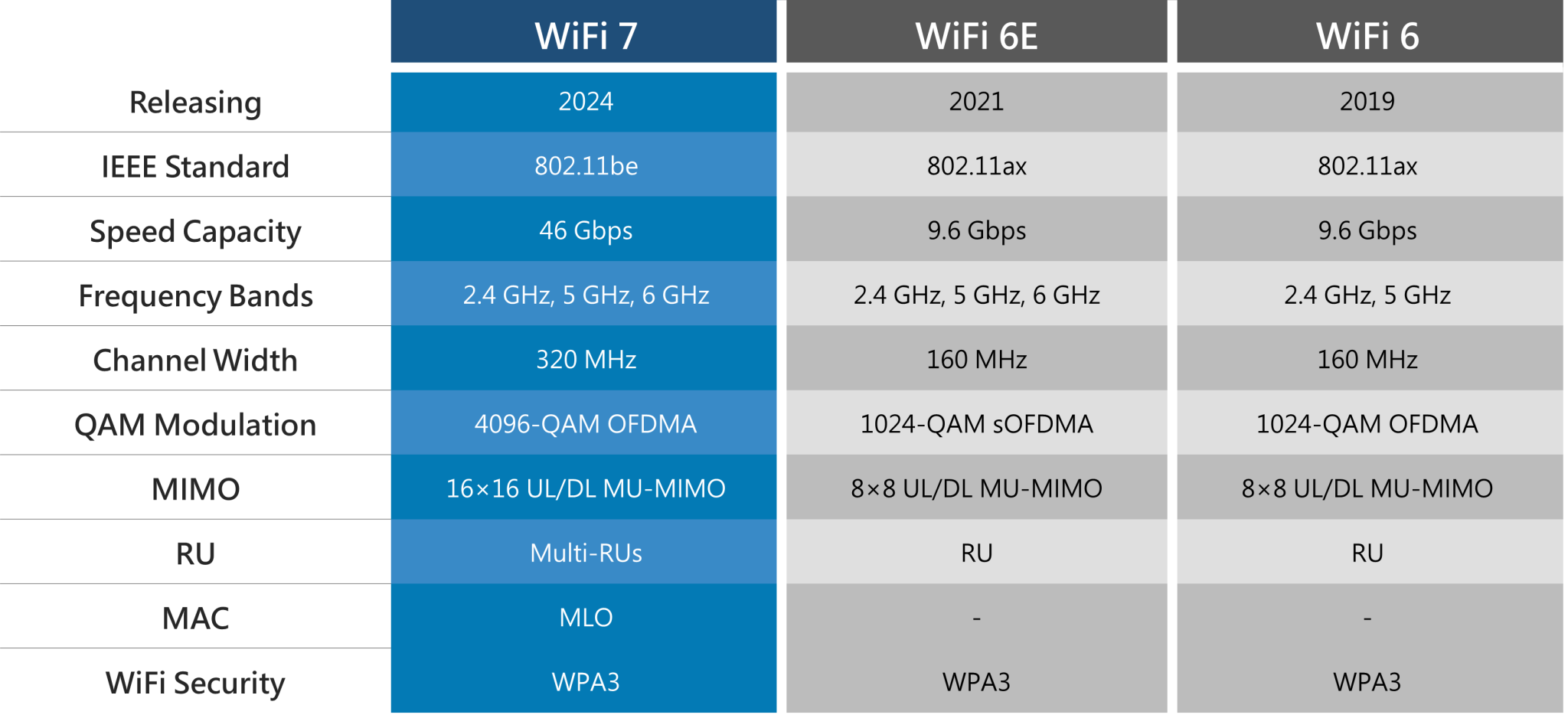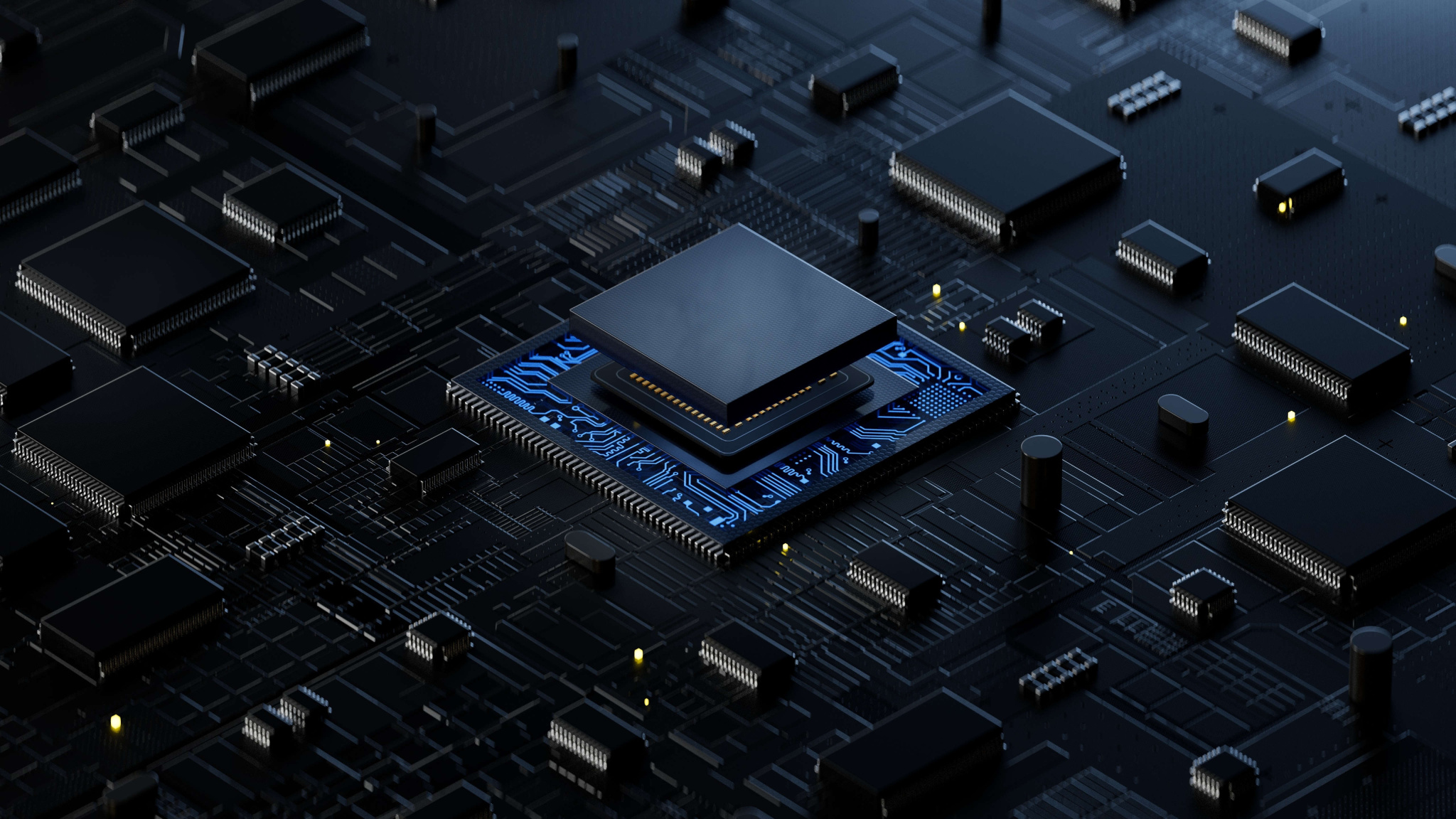Search
- 01/29/2024
What is Wi-Fi 7? Everything You Need to Know About the Future of Wireless Connectivity
In today's digital age, connectivity has become integral to our daily lives. From smartphones and laptops to smart homes and IoT devices, the demand for faster and more reliable wireless connectivity continues to grow. Enter Wi-Fi 7, the next evolution in wireless technology that promises to revolutionize how we connect to the internet. In this blog, we will explore the trends of Wi-Fi 7, compare it with its predecessor, Wi-Fi 6, delve into its security features, and assess the potential impacts it will have on our digital landscape.
To understand the development of Wi-Fi 7, we first need to recognize its need. Due to the explosive growth of data-intensive applications, such as augmented reality (AR), virtual reality (VR), 8K video streaming, and the Internet of Things (IoT), has placed a tremendous burden on existing wireless networks. Given such situation, Wi-Fi 7 is designed to address these challenges by providing faster speeds, improved reliability, and increased capacity.
First of all, what is Wi-Fi 7?
For decades, Wi-Fi technology has helped connect the world by meeting the ever-increasing demands of an ever-expanding user base. The next generation of Wi-Fi will bring vast improvements, realizing a new level of responsiveness and transmission speed. Wi-Fi 7 is the upcoming Wi-Fi standard, also known as IEEE 802.11be Extreme High Throughput. It applies to three frequency bands: 2.4 GHz, 5 GHz and 6 GHz. While Wi-Fi 6 was built to cope with the increasing number of devices, Wi-Fi 7 aims to deliver incridible speeds at higher rates for every device.
Wi-Fi 7 introduces 320 MHz bandwidth, 4096-QAM, Multi-RU, and Multi-Connect modes to deliver speeds 4.8× times faster than Wi-Fi 6 theoretically, these transmission capabilities will allow us to experience more unprecedented applications. Through expanding on the innovations of Wi-Fi 6 and Wi-Fi 6E, Wi-Fi 7 enables faster speeds and dramatically improves reliability for the high levels of communication that will be needed in the future.
Wi-Fi 7 vs Wi-Fi 6E and Wi-Fi 6: Speed and Performance

Wi-Fi 7 Capabilities vs Wi-Fi 6E and Wi-Fi 6
Speed and Capacity
One of the most notable trends in Wi-Fi 7 is its blazing speed. It is expected to achieve up to 46 Gbps speeds, more than 4.8 times faster than Wi-Fi 6. Not only with faster transmission speeds, but two times more channel bandwidth. This impressive speed and bandwidth will benefit not only consumers who want to download large files quickly but also businesses that rely on seamless communication and data transfer.
Broader Multi-Connection
Wi-Fi 7 possess the same MU-MIMO technology that can handle an even more significant number of connected devices simultaneously. Wi-Fi 7 increases the maximum number of streams from 8 to 16. With 16 streams on Wi-Fi 7, every device has enough capacity to run smoothly. This is especially crucial in an era where homes and workplaces are filled with smart devices requiring constant internet connection. Furthermore, the new Multi-Link Operation (MLO) technology allows the device to transmit data across bands, resulting in higher speeds and lower latency.
Improved Latency
Wireless technology has always prioritized reducing latency; Wi-Fi 7 is no exception. With latency as low as one millisecond, it will significantly enhance real-time applications, making tasks like online gaming, video conferencing, and autonomous vehicles smoother and more responsive.
Energy Efficiency
Efficiency is another area where Wi-Fi 7 shines. It is designed to be more energy-efficient than Wi-Fi 6, essential for extending mobile device battery life and reducing energy consumption in connected homes and workplaces.
How does Wi-Fi 7 transform the entire industry?
The introduction of Wi-Fi 7 has the potential to transform various industries. For example, its low latency in healthcare could enable remote surgeries conducted by robots controlled by surgeons from different locations. In education, it could enhance remote learning experiences with real-time interactions. In manufacturing, it could lead to more efficient and precise robotic automation. Its high-speed and smooth transmission capability will bring a disruptive network connectivity experience to every industry, home, and even to individuals.
Smart Homes and IoT
With the ability to connect numerous devices without network congestion, Wi-Fi 7 facilitates seamless communication between smart appliances, security systems, and IoT devices. From your thermostat adjusting based on habits to real-time communication between security systems and smart locks, Wi-Fi 7 creates a responsive living environment. Its efficiency becomes crucial when multiple devices operate simultaneously for an enhanced smart home experience.
Live Streaming & Gaming
The low latency offered by Wi-Fi 7 ensures a lag-free experience for gamers, making it a game-changer in the gaming industry. Gamers can now enjoy real-time responsiveness, giving them a competitive edge and a more immersive gaming environment. Additionally, live streaming platforms benefit from enhanced stability, resulting in higher-quality broadcasts and a more satisfying interaction for viewers.
Telemedicine
The low latency and high bandwidth capabilities ensure that medical professionals can conduct virtual consultations and procedures with unparalleled precision. With the introduction of Wi-Fi 7, telemedicine takes a giant leap forward, allowing for more complex medical interventions to be performed remotely. Patients in remote locations can now access healthcare services without compromising on the quality of diagnosis and treatment.
Instant Translation
Imagine a world where language barriers become virtually non-existent – Wi-Fi 7 makes this a reality. Whether in international business meetings, travel, or everyday conversations, instant translation becomes more accurate and instantaneous. This feature not only facilitates communication between individuals who speak different languages but also promotes cultural exchange and understanding on a global scale.
Wi-Fi 7 Development Trends in the Coming Years
Although the first certified products for Wi-Fi 7 just debuted at the Consumer Electronics Show (CES) in early 2024, the end products of the Wi-Fi industry always rush to the market before the Alliance's certification mechanism begins. This time Wi-Fi 7 is no exception. To promote the Wi-Fi technology update, there are two important keys, firstly, the client devices must be widely imported into the new generation of technology standards, and then APs, routers and other network devices must be popularized.
Although wireless APs, routers and PCs will all cross over into the Wi-Fi 7 generation, this does not mean that Wi-Fi 7 will soon replace Wi-Fi 6 as the mainstream technology for wireless LANs. Cost is a critical factor. The cheapest Wi-Fi 6 network devices are already retailing for around $100, making them affordable for mainstream consumers. But with Wi-Fi 7, because it must support the 6GHz band, its hardware cost is inherently higher than that of a Wi-Fi 6 device. The current retail price of a Wi-Fi 7 router is about USD 600-USD 700, far beyond the average consumer's reach.
Therefore, although network equipment and client devices are entering the Wi-Fi 7 generation, Wi-Fi 6, which has a better price/performance ratio, will remain the in mainstream Wi-Fi market until at least 2024. The widespread adoption of Wi-Fi 7 is expected to wait until 2025 or 2026.
The Transition Period of Wi-Fi 7
Wi-Fi 7 represents a significant leap forward in wireless technology, offering faster speeds, lower latency, and increased capacity. While its development is driven by the ever-growing demand for connectivity in our digital world, Wi-Fi 7 can transform industries, improve smart homes, and contribute to a more sustainable future. As it becomes more widely available, Wi-Fi 7 is set to shape how we connect and interact with the digital world, turning the future of connectivity into a reality today.
One of the challenges when introducing a new Wi-Fi standard is ensuring that it is compatible with existing devices. Fortunately, Wi-Fi 7 is designed to work seamlessly with older devices that support previous Wi-Fi standards, including Wi-Fi 6, Wi-Fi 5, and Wi-Fi 4. This means you won't need to replace all your devices immediately when upgrading to Wi-Fi 7.
While older devices may not be able to utilize Wi-Fi 7's advanced features fully, they will still benefit from its increased capacity and improved network efficiency. This means that even smartphones and laptops that are a few years old can experience better performance on a Wi-Fi 7 network. To fully leverage the capabilities of Wi-Fi 7, newer devices with compatible hardware will be required. As Wi-Fi 7 becomes more prevalent, we expect more new products to hit the market that capitalize on its ultra-high transmission speeds, low latency and high capacity.
Keep up with top trending topic
For the latest innovation technology, application
and industry insight.
Subscribe Our Blog
For the latest innovation technology, application
and industry insight.












